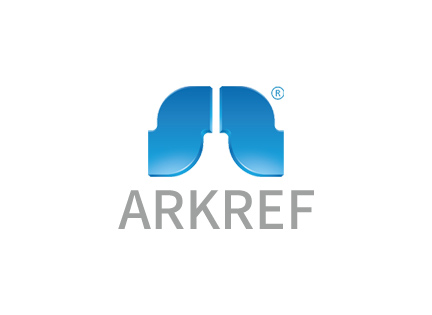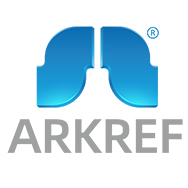Navigating the Selection of Industrial Water Chiller Units
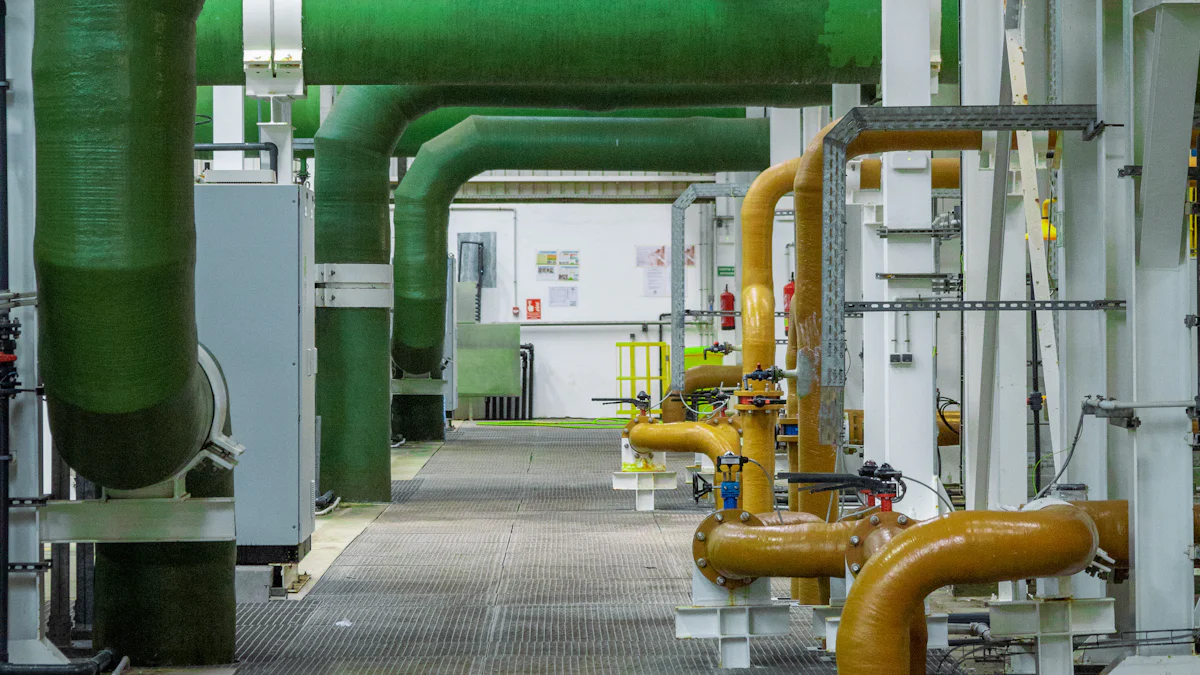
Selecting the right industrial water chiller unit is crucial for maintaining optimal performance and efficiency in various applications. A well-chosen unit ensures effective cooling, energy savings, and longevity of equipment. Arkref, a leader in the refrigeration industry, stands out with its commitment to innovation and quality. The company boasts over ten national technology patents and focuses on developing high-efficiency, energy-saving solutions. Arkref's expertise spans across diverse sectors, offering tailored refrigeration systems for food storage, medicine preservation, and more, ensuring clients receive top-notch service and products.
Determining the Heat Load
Understanding the heat load is a fundamental step in selecting the appropriate water chiller unit. This process involves calculating the amount of heat energy that needs to be removed from a system to maintain the desired temperature. A precise calculation ensures that the water chiller unit operates efficiently and effectively.
Understanding Heat Load Calculations
Factors Influencing Heat Load
Several factors influence the heat load in an industrial setting. The size of the space, the type of equipment used, and the ambient temperature all play significant roles. Additionally, the number of people present and the duration of equipment operation can affect the heat load. Each of these elements contributes to the overall cooling requirements, making it essential to consider them when selecting a water chiller unit.
Tools and Methods for Calculation
Various tools and methods exist to calculate the heat load accurately. Engineers often use specialized software to simulate different scenarios and determine the cooling needs. Manual calculations, based on established formulas, also provide valuable insights. These methods help in selecting a water chiller unit that matches the specific demands of the environment.
Importance of Accurate Heat Load Assessment
Impact on Chiller Performance
An accurate heat load assessment directly impacts the performance of a water chiller unit. When the heat load is underestimated, the chiller may struggle to maintain the desired temperature, leading to inefficiencies and potential equipment damage. Conversely, overestimating the heat load can result in an oversized chiller, increasing energy consumption unnecessarily.
Long-term Efficiency Considerations
Long-term efficiency hinges on a precise heat load assessment. A correctly sized water chiller unit not only meets immediate cooling needs but also adapts to future changes in demand. This foresight ensures sustained performance and energy savings over time. By investing in a thorough heat load analysis, industries can optimize their cooling systems for both current and future requirements.
Understanding Coolant Type, Temperature, and Flow Rate
Selecting the right coolant type, temperature, and flow rate is crucial for the optimal performance of a water chiller unit. These factors significantly influence the efficiency and longevity of the system.
Types of Coolants
Commonly Used Coolants
Industries commonly use several types of coolants in water chiller units. Water, ethylene glycol, and propylene glycol are among the most popular choices. Each coolant has unique properties that make it suitable for specific applications. Water, for instance, offers excellent heat transfer capabilities but may not be ideal in freezing conditions. Ethylene glycol provides better freeze protection, making it suitable for colder environments. Propylene glycol, known for its non-toxic nature, finds use in food and beverage industries.
Compatibility with Chiller Units
Compatibility between the coolant and the water chiller unit is essential. The materials used in the chiller's construction must withstand the chemical properties of the chosen coolant. Incompatible combinations can lead to corrosion, leaks, or reduced efficiency. Manufacturers often provide guidelines on suitable coolants for their units, ensuring users select the most compatible option.
Temperature and Flow Rate Considerations
Optimal Temperature Ranges
Maintaining the optimal temperature range is vital for the efficient operation of a water chiller unit. Each unit has a specific temperature range within which it performs best. Operating outside this range can lead to inefficiencies or even damage. Users should regularly monitor and adjust the system to ensure it remains within the recommended temperature limits.
Flow Rate Impact on Efficiency
The flow rate of the coolant through the water chiller unit directly impacts its efficiency. A higher flow rate can enhance heat transfer, improving the cooling process. However, excessively high flow rates may cause turbulence, reducing efficiency. Conversely, a low flow rate might not provide adequate cooling, leading to overheating. Balancing the flow rate is crucial for maintaining optimal performance and energy efficiency.
Evaluating the Installation Environment
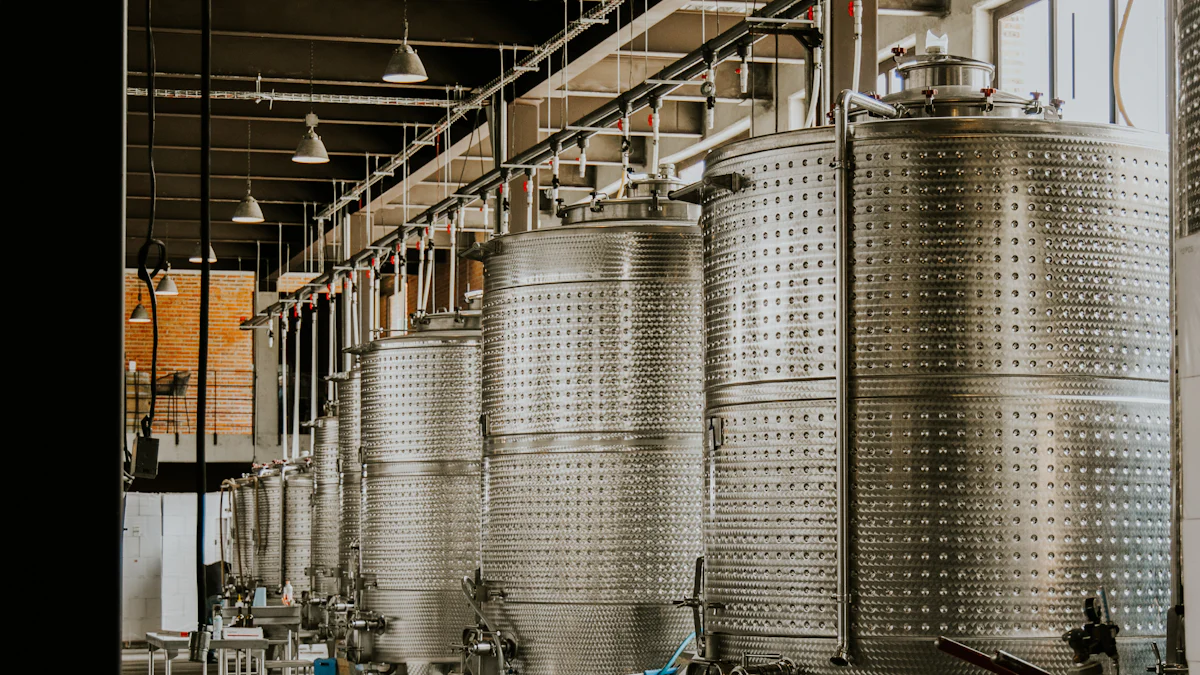
Selecting the right water chiller unit involves evaluating the installation environment. This assessment ensures that the unit operates efficiently and meets the cooling demands of the specific setting.
Environmental Factors
Indoor vs Outdoor Installations
The choice between indoor and outdoor installations significantly impacts the performance of a water chiller unit. Indoor installations offer protection from weather elements, reducing wear and tear. However, they require adequate ventilation to prevent heat buildup. In contrast, outdoor installations benefit from natural airflow but must withstand environmental conditions. Protective enclosures or shelters can mitigate weather-related challenges for outdoor units.
Climate and Weather Considerations
Climate plays a crucial role in determining the suitability of a water chiller unit. In regions with extreme temperatures, units must handle fluctuations without compromising efficiency. For instance, chillers in hot climates need robust cooling capabilities, while those in colder areas require freeze protection. Weather considerations also include humidity levels, which can affect the unit's performance and longevity. Manufacturers often provide guidelines on optimal operating conditions for their chillers.
Space and Accessibility
Space Requirements for Installation
Adequate space is essential for the proper installation of a water chiller unit. Units need sufficient clearance for airflow and maintenance activities. Overcrowded spaces can hinder performance and complicate repairs. Planning the layout before installation ensures that the unit fits comfortably and operates efficiently. Industries should consider future expansion needs when allocating space for chillers.
Maintenance Accessibility
Easy access for maintenance is vital for the long-term functionality of a water chiller unit. Regular inspections and servicing prevent unexpected breakdowns and extend the unit's lifespan. Designating clear pathways and ensuring unobstructed access to key components facilitate efficient maintenance. Industries can benefit from case studies showcasing successful installations in various environments. These examples highlight the importance of strategic planning and accessibility in maintaining optimal chiller performance.
Utilizing Chiller Performance Curves
Reading and Interpreting Performance Curves
Understanding chiller performance curves is essential for selecting the right unit. These curves provide valuable insights into how a chiller operates under various conditions.
Key Metrics to Consider
Performance curves highlight several key metrics. These include cooling capacity, power consumption, and efficiency at different temperatures and loads. By examining these metrics, users can gauge how well a chiller will perform in their specific environment. Cooling capacity indicates the amount of heat the chiller can remove, while power consumption reflects the energy required for operation. Efficiency metrics help determine the cost-effectiveness of the unit over time.
Comparing Different Models
Comparing performance curves of different models aids in making informed decisions. Users should look for models that offer high efficiency and low power consumption at the desired operating conditions. This comparison ensures that the selected chiller meets the cooling needs without excessive energy use. Manufacturers often provide performance curves for their products, allowing users to evaluate and choose the best option for their requirements.
Ensuring Correct Size Selection
Selecting the correct size of a chiller unit is crucial for optimal performance and cost-effectiveness. An appropriately sized chiller ensures efficient operation and meets the cooling demands of the application.
Avoiding Over or Under-sizing
Over-sizing or under-sizing a chiller can lead to inefficiencies. An oversized chiller may cycle on and off frequently, wasting energy and increasing wear and tear. Conversely, an undersized chiller may struggle to maintain the desired temperature, leading to inadequate cooling. Proper sizing involves calculating the heat load accurately and selecting a chiller that matches this requirement.
Efficiency and Cost Implications
The size of a chiller directly impacts its efficiency and cost. A correctly sized chiller operates at peak efficiency, reducing energy consumption and operational costs. It also minimizes maintenance expenses by preventing unnecessary strain on the system. Investing in the right size chiller ensures long-term savings and reliable performance. Users should consider both immediate and future cooling needs when selecting a chiller to maximize efficiency and cost-effectiveness.
Additional Considerations
Process Fluid Type and Safety
Compatibility with Chiller Materials
Industries must ensure that the process fluid is compatible with the materials used in the chiller unit. Incompatible fluids can cause corrosion or damage to the system, leading to costly repairs or replacements. Manufacturers often provide guidelines on which fluids work best with their chillers. Users should consult these recommendations to avoid potential issues and maintain the longevity of the equipment.
Safety Standards and Regulations
Adhering to safety standards and regulations is crucial when selecting a process fluid. Different industries have specific requirements to ensure the safe operation of chiller units. For instance, the food and beverage industry may require non-toxic fluids to prevent contamination. Users should familiarize themselves with relevant regulations and choose fluids that comply with these standards. This practice not only ensures safety but also helps avoid legal complications.
Voltage Requirements and Intended Purpose
Electrical Compatibility
Electrical compatibility is a key factor in selecting an industrial water chiller unit. Users must ensure that the chiller's voltage requirements match the available power supply. Mismatched voltages can lead to inefficient operation or even damage to the unit. Consulting with an electrician or the chiller manufacturer can help determine the appropriate voltage specifications. This step ensures that the chiller operates safely and efficiently.
Specific Applications and Needs
Understanding the specific applications and needs of the chiller unit is essential for optimal performance. Different industries have unique cooling requirements based on their processes. For example, a chiller used in a pharmaceutical setting may need precise temperature control to maintain product integrity. Users should assess their specific needs and select a chiller that meets these demands. Tailoring the chiller to the intended purpose ensures effective cooling and enhances overall efficiency.
Types of Industrial Chillers and Their Applications
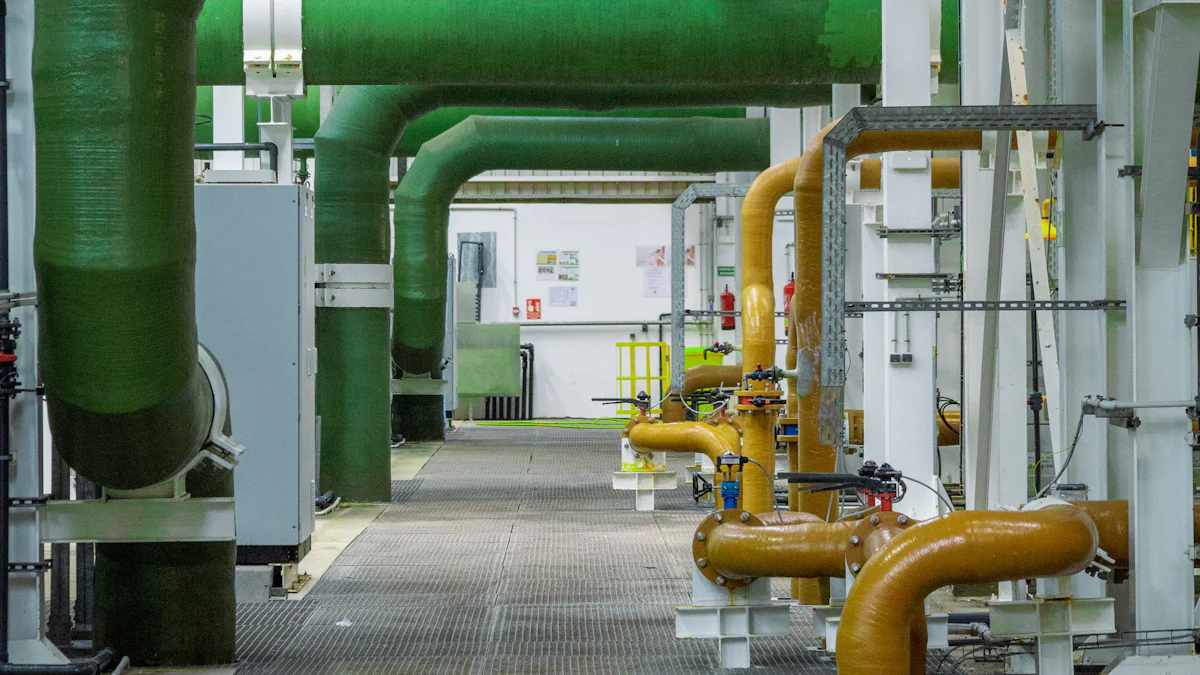
Industrial chillers play a crucial role in various sectors by providing effective cooling solutions. Understanding the different types of chillers and their applications helps industries choose the most suitable option for their needs.
Air-Cooled Chillers
Air-cooled chillers use ambient air to dissipate heat, making them a popular choice in many industries.
Advantages and Disadvantages
Advantages:
Ease of Installation: Air-cooled chillers require less installation space and do not need a cooling tower, simplifying setup.
Lower Maintenance: These chillers have fewer components, reducing maintenance requirements and costs.
Versatility: Suitable for both indoor and outdoor installations, offering flexibility in placement.
Disadvantages:
Efficiency Limitations: Air-cooled chillers may be less efficient in extremely hot environments due to reliance on ambient air for cooling.
Noise Levels: The fans used in air-cooled chillers can generate higher noise levels compared to other types.
Typical Applications
Air-cooled chillers find applications in industries where water availability is limited or where ease of installation is a priority. They are commonly used in commercial buildings, data centers, and manufacturing facilities that require moderate cooling loads.
Water-Cooled Chillers
Water-cooled chillers utilize water from a cooling tower to remove heat, offering enhanced efficiency in certain conditions.
Advantages and Disadvantages
Advantages:
Higher Efficiency: Water-cooled chillers generally provide better energy efficiency, especially in large-scale operations.
Quiet Operation: These chillers operate more quietly due to the absence of large fans.
Disadvantages:
Complex Installation: The need for a cooling tower and additional piping increases installation complexity and cost.
Water Usage: Dependence on water resources can be a limitation in areas with water scarcity.
Typical Applications
Water-cooled chillers are ideal for large industrial plants, hospitals, and facilities with high cooling demands. They are preferred in environments where energy efficiency and quiet operation are critical.
Evaporative Condensed Chillers
Evaporative condensed chillers combine air and water cooling methods to enhance performance.
Advantages and Disadvantages
Advantages:
Improved Efficiency: By using both air and water, these chillers achieve higher efficiency levels than air-cooled units alone.
Reduced Water Consumption: They use less water compared to traditional water-cooled systems.
Disadvantages:
Higher Initial Cost: The combination of cooling methods can lead to increased initial investment.
Maintenance Requirements: Regular maintenance is necessary to ensure optimal performance and prevent scaling.
Typical Applications
Evaporative condensed chillers are suitable for industries seeking a balance between efficiency and water usage. They are often used in food processing, pharmaceuticals, and other sectors requiring precise temperature control.
In conclusion, selecting the right type of industrial chiller depends on specific operational needs, environmental conditions, and budget considerations. By understanding the advantages and applications of each chiller type, industries can make informed decisions to optimize their cooling systems.
Advantages of Arkref Chillers
Unique Features of Arkref Chillers
Arkref Chillers stand out in the industry due to their innovative design and advanced technology. The company has secured over ten national technology patents, showcasing its commitment to cutting-edge solutions. These chillers incorporate high-efficiency refrigeration units and energy-saving barrel pumps, which enhance performance and reduce operational costs.
Arkref's chillers also feature a PLC intelligent program control box, allowing for precise temperature management and system monitoring. This technology ensures that the chillers operate at optimal efficiency, adapting to varying cooling demands. The integration of environmentally friendly refrigeration systems further underscores Arkref's dedication to sustainability.
Why Choose Arkref for Your Needs
Choosing Arkref Chillers offers several benefits for industries seeking reliable and efficient cooling solutions. Their products cater to a wide range of applications, including food quick-freezing storage, medicine preservation, and workshop air conditioning. This versatility makes Arkref an ideal choice for businesses with diverse cooling requirements.
Arkref's focus on customization allows clients to receive tailored solutions that meet their specific needs. The company's expertise in program design and equipment customization ensures that each chiller unit aligns with the client's operational goals. By selecting Arkref, industries gain access to top-notch service and products that enhance their cooling systems' efficiency and longevity.
Selecting the right industrial water chiller involves several key considerations. Industries must assess heat load, coolant type, and installation environment. Evaluating chiller performance curves and ensuring correct sizing are crucial steps. Each factor contributes to the efficiency and longevity of the cooling system.
Choosing Arkref chillers offers distinct advantages. Their innovative design and advanced technology provide reliable and efficient cooling solutions. Arkref's commitment to customization ensures tailored systems that meet specific operational needs. Industries benefit from enhanced performance and energy savings, making Arkref an ideal choice for diverse applications.
See Also
Maximizing Chiller and Compressor Efficiency in ARKREF CO₂ Transcritical Refrigeration System
Improving Industrial Cooling Using ARKREF CO₂ Transcritical Refrigeration System
Deploying ARKREF CO₂ Transcritical Refrigeration System: An Affordable Handbook for Industries
Revealing the Triumph of ARKREF CO₂ Transcritical Refrigeration System in Various Sectors
